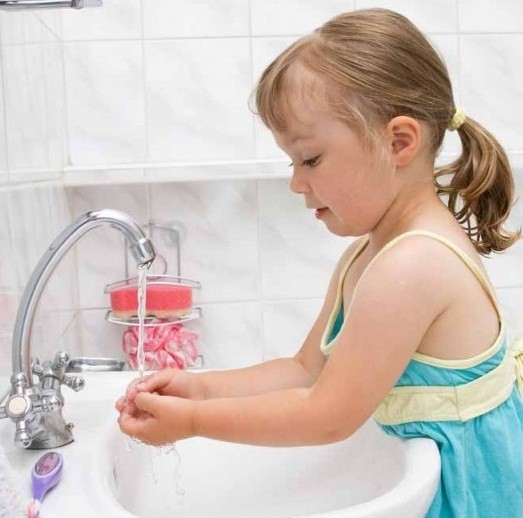Food Safety - Proper Handwashing Technique

PROPER HANDWASHING TECHNIQUE
Handwashing
Wet hands and arms - Use running water as hot as you can comfortably stand Should be at least 100ºF (38ºC)
Apply soap. - Apply enough to build up a lather
Scrub hands and arms vigorously.
- Scrub them for 10-15 seconds. Clean under fingernails and between fingers.
Rinse hands and arms thoroughly.
- Use running warm water.
Dry hands and arms
- Use a single-use paper towel or hand dryer.
Using hand antiseptic..
Hand antiseptic – liquid or gel used to lower the number of pathogen in the skin.
- Antiseptics should only be used AFTER handwashing
- This should never be used in place of hand washing
- Hand should be dry after using hand antiseptic
When to wash your hands
When to wash hands? - Before starting to work
After the following:
- Using the restroom
- Handling raw meat, poultry, and seafood (before and after)
- Touching the hair, face, or body
- Sneezing, coughing, or using a tissue
After the following:
- Eating, drinking, smoking, or chewing gum or tobacco
- Handling chemicals that might affect food safety
- Taking out garbage
- Clearing tables or busing dirty dishes
After the following:
- Touching clothing or aprons
- Handling money
- Leaving and returning to the kitchen/prep area.
- Handling service animals or aquatic animals
- Touching anything else that may contaminate hands
Managing handwashing
Set handwashing signs and stations
- Restrooms or directly next to them
- Food-prep areas
- Service areas
- Dishwashing areas
- Hot and cold running water
- Soap
- A way to dry hands
- Garbage container
- Signage
- Handwashing Stations
Handwashing
Wet hands and arms - Use running water as hot as you can comfortably stand Should be at least 100ºF (38ºC)
Apply soap. - Apply enough to build up a lather
Scrub hands and arms vigorously.
- Scrub them for 10-15 seconds. Clean under fingernails and between fingers.
Rinse hands and arms thoroughly.
- Use running warm water.
Dry hands and arms
- Use a single-use paper towel or hand dryer.
Using hand antiseptic..
Hand antiseptic – liquid or gel used to lower the number of pathogen in the skin.
- Antiseptics should only be used AFTER handwashing
- This should never be used in place of hand washing
- Hand should be dry after using hand antiseptic
When to wash your hands
When to wash hands? - Before starting to work
After the following:
- Using the restroom
- Handling raw meat, poultry, and seafood (before and after)
- Touching the hair, face, or body
- Sneezing, coughing, or using a tissue
After the following:
- Eating, drinking, smoking, or chewing gum or tobacco
- Handling chemicals that might affect food safety
- Taking out garbage
- Clearing tables or busing dirty dishes
After the following:
- Touching clothing or aprons
- Handling money
- Leaving and returning to the kitchen/prep area.
- Handling service animals or aquatic animals
- Touching anything else that may contaminate hands
Managing handwashing
Set handwashing signs and stations
- Restrooms or directly next to them
- Food-prep areas
- Service areas
- Dishwashing areas
- Hot and cold running water
- Soap
- A way to dry hands
- Garbage container
- Signage
- Handwashing Stations
- dxe5da19cf94a25a2d3835bd1cfdfcb7b3.jpg